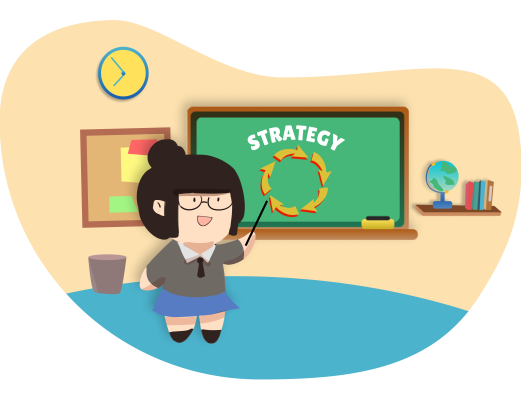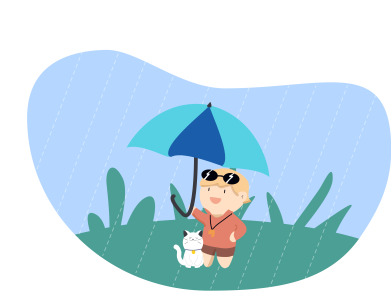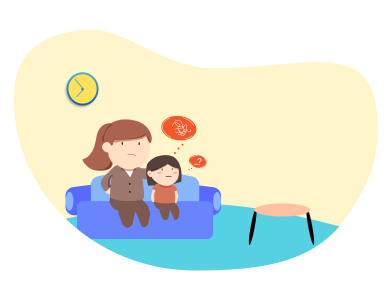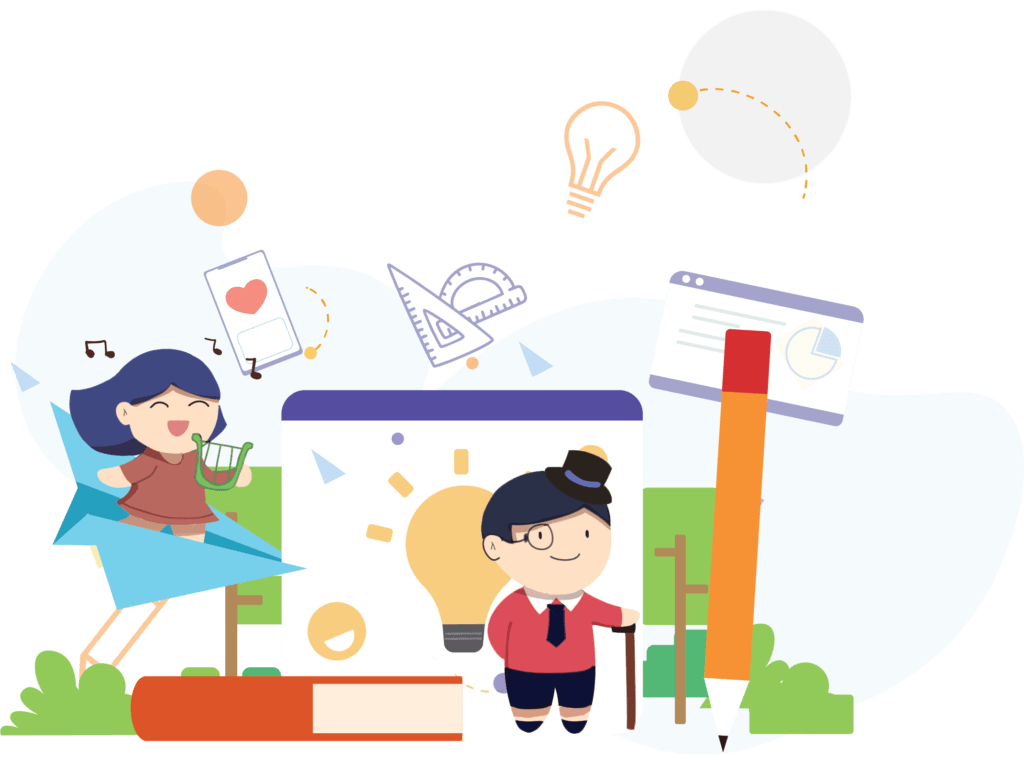A teacher’s guide to incorporating metacognition into daily classroom teaching practice!
What are Metacognition Strategies?
Metacognition refers to strategies that assist students to reflect on and improve their own learning processes. To put it another way, “metacognition” refers to activities designed to get students thinking about their own thinking. Metacognition is a learning strategy that encourages students to reflect on their own growth as a learner and the role that their own activities play in their professional and personal development. Metacognitive activities include things like planning how to do a learning activity, using the right skills and techniques to solve a problem, self-evaluating and self-correcting based on how well you’re doing on a task, and so on.
The ability to reflect on one’s own knowledge, identity, and learning goals and progress toward those goals is a key benefit of metacognition in student learning. When it comes to education, reflection is crucial. Teachers who are reflective in their practice develop professionally, better address the needs of their students, and take stock of their own competence and growth. Motivating students to reflect on their learning experiences can help them develop persistent metacognitive skills and improve their own reflective practices.
Significance of Metacognition Strategies in Classroom
It is crucial that children acquire metacognitive skills as they progress through elementary school (Norman, 2016). Metacognition is the process through which a primary school student actively participates in his own learning by setting goals, keeping track of his progress, reflecting on his performance, and adjusting his approach as necessary. When it comes to metacognition, however, the teacher plays a much more significant role in assisting younger children than they do in other instructional methods. To help their students develop into metacognitive, self-regulated learners, primary school teachers should:
- Establish measurable educational goals;
- Keep an eye on your kids’ metacognitive development and performance; and
- Always be there to cheer them on and encourage them along the way.
One form of active reading would be the use of graphic organizers. Children can benefit from these basic aids because they facilitate the development of deeper meaning through the organization of concepts into comprehensive frameworks. When kids are trying to get their thoughts in order, they aren’t just filing things away in folders. Using methods like these to study is not only effective but also interesting for the student.
Practical classroom application necessitates the use of cognitive strategies that support students’ paths to understanding. Instead of just “covering the material,” as is common in schools today, teachers should give their students plenty of time to practice a certain way of thinking so that they can do it well.
Tips for fostering Metacognitive Skills in the Classroom
Providing opportunities for students to apply metacognition at critical points in their studies is an effective way to cultivate metacognitive skills in the classroom. This helps pupils develop their metacognition and self-awareness so they may select the most effective method of thinking moving forward. Many top-tier sports teams have employed a cycle known as “Plan, Do, Review” to achieve their goals. The following steps are important for breaking down strategies:
Students can save time and energy by organizing their thoughts and materials before beginning a project. The components of a well-organized strategy for preparation are:
- Considering related but different activities;
- Having well-defined goals;
- Estimating how long something will take by using the right methods
- Mid-task evaluation
- Reflecting back on a task you just finished
After finishing the project, students should take some time to think about what they did well and where they may improve. Students would grow, improve, and gain the most possible knowledge from the experience if they did so.
Strategies That Improve Metacognition in the Classroom

In order to help students build and strengthen their metacognition, the following seven strategies can be implemented in the classroom.
1. Make it clear to students how their brains are wired for growth.
Students’ motivation and intelligence both play a role in how well they perform in school. Students are more likely to engage in reflective thinking about their own learning and development when they adopt a growth mindset as opposed to a fixed mindset, according to the research. It’s possible to give students a sense of power by introducing them to the science of metacognition and showing them how they might develop their own cognitive abilities.
2. Have them practice identifying their own areas of confusion.
Growing self-awareness requires admitting one’s own confusion and recognizing one’s own ignorance. Asking, “What was most confusing about the topic we studied today?” At the end of a difficult session is a great way to help students process their thoughts and feelings about the day. Not only does this start students’ metacognitive processing, but it also fosters an environment where students feel comfortable expressing their confusion.
3. Allow time for students to reflect on their school performance.
Students develop their capacity for higher-order thought by being aware of their own progress in this area. It could be helpful to ask the following questions during this process:
Before taking this class, I always assumed that earthquakes were caused by _______. Then, what I see now is that they are the result of _____.
How has this course affected my perspective on greenhouse gasses?
4. Require students to keep reflective journals on their educational experiences.
Personal learning journals are a great tool for assisting students in keeping a check on their own thought processes. Instead of asking students to summarize what they learned, ask them to reflect on the process of learning each week. These are some examples of possible questions:
What was the week’s simplest thing to learn for me? Why?
Where did I have the greatest difficulty mastering new material? Why?
How effective were the study methods I employed to get ready for the test?
I need to figure out what strategies I used to learn most effectively. How?
How can I make the next week better at studying?
What study methods did not achieve the desired results? What am I going to do differently the next time around?
Let students use any type of journal they like to express themselves creatively, such as a mind map, a blog, a wiki, a diary, a list, an electronic tool, etc.
5. Have students use a “wrapper” to increase their ability to keep track of their work.
Wrapper refers to a brief intervention that surrounds a preexisting activity and incorporates a metacognitive strategy. As a teacher, you could start by providing some advice on how to be an engaged listener. Ask students to jot down three main takeaways from the talk afterward. Then, you can tell the class what you think are the three most important points and have them double-check their answers to see if they come close to your expectations. The more you engage in this practice, the more your ability to monitor your own learning will develop.
6. Consider essays rather than multiple-choice exams.
Preparing for a multiple-choice test needs lower-level thinking skills while preparing for an essay test needs higher-level metacognitive skills. Even though multiple-choice questions are easier to mark, adding a few short essay questions might help students think more deeply about what they have learned before a test.
7. Facilitate reflexive thinking.
An important part of developing sound cognitive skills is engaging in reflective self-awareness or reflexivity. By fostering discussion that investigates and addresses implicit biases, educators may foster an environment favorable to critical thinking and in-depth student learning. Students develop the ability to “think about their own thinking” when they discuss and write about their own prejudices and moral difficulties connected to politics, economics, race, poverty, justice, freedom, etc. They start questioning their preconceived opinions and learning to think more creatively and flexibly.
The Bottom Line
Young people develop greater independence, adaptability, and productivity when teachers encourage them to reflect on, monitor, and assess their own learning practices. An enhanced ability to consider options and evaluate consequences helps students when solutions are not entirely obvious. Students use reflective tactics to identify where they are having trouble understanding and work toward solutions. Developing students’ metacognitive strategies in relation to their academic work gives them opportunities for self-reflection and personal development.







